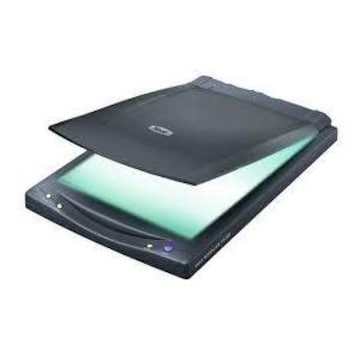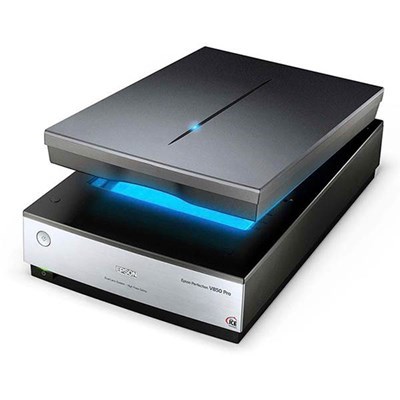Unveiling Optical Scanners: Function, Types, And Impact in the Contemporary World
Introduction
Optical scanners are essential tools in modern-day technology, changing the way we digitize, process, and share information. They create digital copies of physical documents, images, and even objects, serving sectors such as healthcare, security, and commerce. This article unravels the mystery behind the mechanism and operation of optical scanners, discussing their types and use cases in various industries. We will also uncover key technical specs one should consider when choosing an optical scanner and touch on how these tools contribute to security and authentication.
How do Optical Scanners Work?
Optical scanners have undeniably become a cornerstone of modern technology, seamlessly bridging the gap between physical and digital data. But how do these incredibly impactful tools function?
The basic principle of an optical scanner's operation is light. Like the human eye, an optical scanner views and interprets the world through light. But that's just the beginning, as they employ an intricate process to digitize and store information:
1. Light Source: The device kicks off its scanning operation by illuminating the targeted object, document, or image with a precisely controlled light source.
2. Capture of Reflected Light: The scanner doesn’t just emit light but also captures the light reflected off the object. This is done through a light sensor, typically a charge-coupled device (CCD) or contact image sensor (CIS).
3. Data Translation to Binary: The captured light data is then encoded into binary. This step is critical, as it translates the physical data scanned by the device into a format that the computer system can comprehend.
4. Creation of the Digital Image: Finally, this converted binary data forms the digital image, almost like a jigsaw puzzle of light and dark patches depending on the light reflection. This digital data can now be easily stored, edited, and transferred across various digital platforms.
Essentially, optical scanners use light to digitize the physical world, bringing documents, images, and more to your fingertips. Fascinating, isn't it?
What Are the Different Types of Optical Scanners?
Flatbed Scanners, Sheet-fed Scanners, Handheld Scanners, Drum Scanners
There are diverse types of optical scanners, each serving specific functions depending on the scanning requirements. Let’s delve into these four primary types of optical scanners: Flatbed, Sheet-fed, Handheld, and Drum scanners.
1. Flatbed Scanners
- Usage: Flatbed scanners, the most common type used, feature a flat, glass bed where users can lay out their document or object for scanning.
- Pros: They are great for fragile or thick documents due to their non-contact nature. With outstanding resolution, they are suitable for detailed work and for scanning at high DPI levels.
- Cons: On the downside, they are relatively large and can take up a significant amount of space.
2. Sheet-fed Scanners
- Usage: Sheet-fed scanners, as the name implies, feed the document through the device to scan it.
- Pros: Good for high-volume scanning operations and saving space, as they're more compact than flatbed scanners.
- Cons: Delicate documents can be damaged in the process, and they don’t cater to thick or bound documents.
3. Handheld Scanners
- Usage: With portability being their key feature, handheld scanners are excellent for on-the-go scanning.
- Pros: Their compact nature makes them a great choice for fieldwork. They're perfect for ad-hoc or situational scanning and are quite affordable.
- Cons: They require a steady hand to produce clear images and may not be suitable for detailed or professional work.
4. Drum Scanners
- Usage: Drum scanners offer the highest possible scanning quality, which is why they are often used for professional purposes.
- Pros: With unparalleled resolution and color depth, drum scanners can reproduce images and documents of remarkably high quality.
- Cons: They are expensive, larger, and more complex to operate compared to other scanners.
Understanding these scanner types, their pros, and cons are essential when selecting the ideal scanner that best fits your specific needs. Remember, the scanner of choice will significantly impact the quality of your scanning projects.
How Are Optical Scanners Utilized in Various Industries?
Optical scanners have penetrated various sectors due to their ability to convert data into a digital format, reshaping the approaches used in storing, sharing, and accessing information across industries. Here's a look at their applications:
1. Healthcare: Scanners play a significant role in modern healthcare for a variety of uses, such as:
- Digitizing patient records and prescriptions for easy retrieval and sharing.
- Utilizing pulse rate scanners for health monitoring.
2. Business: In the business sector, scanners are instrumental for:
- Streamlining document management by digitizing paperwork.
- Improving workflows by reducing the need for physical records.
3. Security and Authentication: Optical scanners bolster security efforts and authenticate identities using:
- Fingerprint scanners for high-level security checks.
- Document scanners to process and authenticate identification documents.
4. Retail: The retail industry uses barcode scanners to:
- Manage inventory effectively.
- Facilitate quicker and more accurate sales processing.
5. Art and Design: High-resolution scanners in arts help to:
- Perform artwork replication by capturing every minute detail of the original art piece.
- Preserve the quality and texture of art pieces and photographs during digitization.

While optical scanners' mechanisms may be complex, their applications across various industries have proved invaluable. With their ability to digitize a wide range of data efficiently and precisely, these tools have become a fundamental pillar in the technological infrastructure supporting modern-day operations in various industries.
What Are the Key Technical Specifications of Optical Scanners to Consider?
When choosing an optical scanner, several technical specifications could influence your decision, ranging from resolution and color depth to speed, size, compatibility, and connectivity. Here's a comprehensive overview of each:

1. Resolution: Measured in dots per inch (DPI), the resolution is a critical factor that determines the clarity and detail of the scanned image. An optical scanner with higher resolution provides more sharpness and detail in the scanned document. For scanning documents, a minimum of 300 DPI should suffice, while a higher resolution of about 600 DPI or more is ideal for scanning photographs.
2. Color Depth: Also referred to as the bit depth, this specification is essential for the richness of the color captured by the scanner. The greater the color depth, the more vibrant, and accurate the scanned image will appear, capturing the subtle changes in contrast and color gradients more effectively.
3. Speed: The scanning speed plays a crucial role, especially when you need to scan high volumes of documents within a short time. Scanning speed is generally measured in pages per minute (PPM).
4. Size and Compatibility: Size specifications can determine if the scanner fits in your workspace and if it can accommodate your scanning needs. Similarly, software compatibility ensures that the scanner works harmoniously with your existing operating system.
5. Connectivity: Modern-day scanners come with various connectivity options such as USB, wireless, and network connections. Opt for the one that aligns with your operational needs.
Remember, these factors can vary between different types of optical scanners, and the ideal specifications entirely depend on your unique requirements and budget.
Conclusion
When choosing an optical scanner, remember to look at resolution, which determines the clarity of the scan. Opt for DPI (dots per inch) of 300 for documents and 600 or more for photographs. Also consider the color depth, which reflects the richness of the color captured. A higher bit depth means a more vibrant image. Additionally, look at the scanner's speed, size, and connectivity options. Lastly, choose a type that fits your specific needs and doesn't overlook software compatibility.
Related FAQs about what are optical scanners
How does the resolution affect the performance of an optical scanner?
The resolution, measured in dots per inch (DPI), directly impacts the clarity and detail of scanned images. A higher DPI yields higher image sharpness and detail. Thus, a scanner with a high resolution performs better with detailed images or delicate documents, whereas a lower resolution scanner can suffice for basic text documents.
What are the future trends in optical scanning technology?
Future trends in optical scanning technology include greater AI integration, high-speed scanning, and improved resolution. With AI, the technology could auto-correct scanned images, extract data, and even recognize objects or text. High-speed scanning will improve efficiency, while advancements in resolution will allow more detail capture.
How do optical scanners contribute to security and authentication?
Optical scanners play a critical role in security and authentication by reading biometric data like fingerprints or retina scans. Such data is tough to forge, making scanners a reliable tool for verifying identities. They are also used to authenticate IDs or scan barcodes on security credentials.


